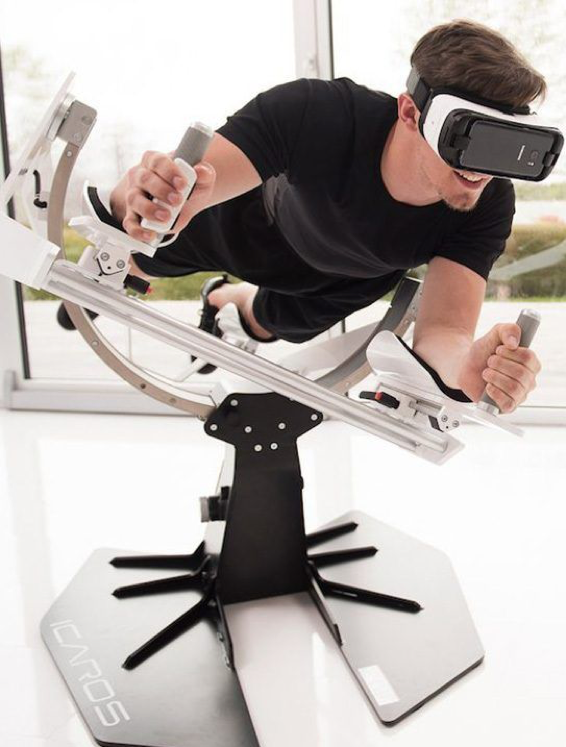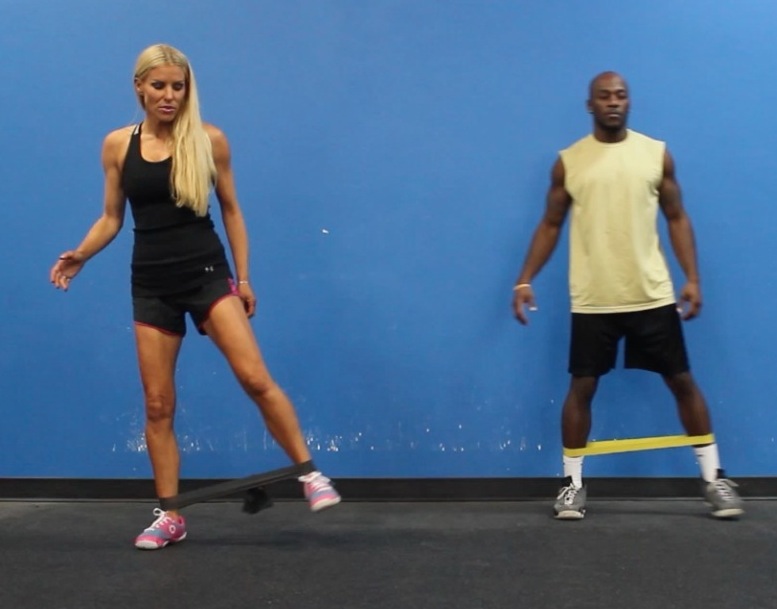One of the biggest obstacles to consistent exercise is the sheer difficulty of establishing and maintaining motivation. We’re all too familiar with how hard it is to muster the willpower to go above and beyond our own comfort zones. And in the constant search for solutions to this ever-present challenge, a new factor has arisen: virtual reality. VR fitness is essentially the idea that virtual reality technologies can be used to engage the sense and enhance exercise practices, in part by increasing motivation. But can it really be relied upon?
VR fitness isn’t exactly a brand new trend. Back in 2014, there were reports of how IMAX screens, VR headsets, and even 3D sound systems were being used in a number of popular exercises. The innovations discussed included “The Trip,” a stationary bicycle spin class offered by Santa Monica’s 24 Hour Fitness that involved a floor-to-ceiling screen. Spin students would pedal to music that was synchronized with massive on-screen visuals: first-person views of bike trails in the mountains, roads that crossed gorgeous lakes, and even fantastically harmless rides through virtual fire. Similarly, many yoga studios have since taken to using surround sound systems and floor-to-ceiling screens to facilitate focus and relaxation during classes.
The success of these VR exercise models is reflected in a more recent study. According to Medical News Today, using VR can actually decrease pain, lower the heart rate, and ultimately improve performance during exercise. In the referenced study by scientists from the University of Kent in the UK, 80 participants were divided equally into two groups. Both groups of 40 were made to perform an isometric bicep curl – one group without VR, and the other with VR headsets that showed the same room as the non-VR group, complete with digital representations of their curling arms. Those who had VR headsets on lasted two minutes longer than those in the other group, and also experienced an average three-beat-per-minute reduction in heart rate. “It is clear from the data gathered that the use of VR technology can improve performance during exercise on a number of criteria,” explained study lead author Maria Matsangidou, a doctoral researcher at the university.
Given studies like this one, it shouldn’t come as a surprise that there are now many practical applications of VR in fitness. As the name itself suggests, virtual reality encompasses anything from the real world that can be adapted into a digital world with a degree of accuracy. This is why modern VR was first applied, for the most part, as a means of making video games more immersive. It’s done so mostly through first-person shooter and adventure games, which are all the more tantalizing when they feel as if they’re coming to life around us. And aside from these mainstream examples, a form of VR that came about before modern headsets even existed garnered success in the world of online gambling. Gambling.com provides an overview of the popularity of online “live dealer” casinos. By allowing players to engage with live, human casino dealers online, developers in this space have long provided the experiential element that’s missing in typical, non-VR digital games.
The point of mentioning these early and more mainstream uses for VR is to better explain the core point of the technology. VR’s ability to drive immersive experiences and simulations has also been put to use in other forms of entertainment and even in health care and education. But you can see in the simplicity of some of the gaming functionality just how vast the potential may ultimately be in fitness. Going beyond the aforementioned spin class and yoga applications, for instance, if a VR shooter can allow gamers to interact with virtual “bad guys,” what’s to stop a developer from crafting a similar experience around strategic punches, kicks, and other movements designed to comprise a workout? If a VR live casino can put a human dealer in front of a player in real time, why can’t a workout app do the same with a virtual trainer?
When you think of things this way, considering the totality of modern VR rather than just vague fitness ideas or the applications we’ve seen to date, it seems that the emerging trend toward VR fitness is, in fact, veryreal. It may be slow to develop, and in some cases, it may require equipment we don’t have yet to reach its full potential. But VR seems destined to carve out quite a bit of space in the world of fitness.







